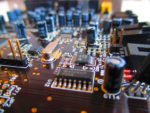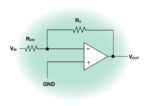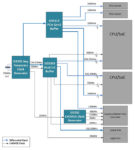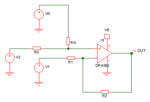Tips for preventing problems could fill a book, especially if every professor, technician, or engineer were to contribute tricks and tips that they have learned over the years. However, many will agree that an ounce of prevention is worth a pound of cure. Here, we present a few general tips that may seem obvious to […]
Industry Experts
Digital filters vs. Analog filters
Digital and analog filters both take out unwanted noise or signal components, but filters work differently in the analog and digital domains. Analog filters will remove everything above or below a chosen cutoff frequency, whereas digital filters can be more precisely programmed. Analog filters that remove signals above a certain frequency are called low pass […]
What is an op amp?
Op Amps or operational amplifiers, are fundamental building blocks in electronic design, mainly because these analog integrated circuits (ICs) are very versatile. Operational amplifiers can do more than amplify, or add “gain” to a signal, but it is a fundamental function that an op amp can magnify an input signal (and also any noise in […]
What is feedback?
Feedback is a term that describes comparing the actual output of a system to the desired output and adjusting the actual output to produce the desired end result. For example, the human nervous system provides constant feedback to the brain, especially when pain is felt for avoiding further bodily harm. In electronics, feedback is defined […]
Your Summer Reading List: 16 useful electronics engineering resources
Compiled here is a list of engineering resources related to electronics and electronics design, at all levels, both general and specific – and favorites of Electro-Tech-Online forum member “spec“, an electronics design engineer in the UK. The list includes books, links to online tutorials, and links to a manufacturer’s application reports or datasheets that he has […]
STMicroelectronics reveals motor drivers to streamline design and boost runtime of battery-powered devices for the Internet of Things
With the expansion of portable technology in everyday life, new tiny, low-power electric-motor drivers from STMicroelectronics (NYSE: STM), a global semiconductor leader serving customers across the spectrum of electronics applications, are enabling sophisticated battery-powered equipment to become smaller and more mobile with extended runtime. Controlling the motors at the heart of devices like portable medical […]
Clock Tree 101
By Linda Lua, Silicon Labs What is a clock tree? A clock tree is a clock distribution network within a system or hardware design. It includes the clocking circuitry and devices from clock source to destination. The complexity of the clock tree and the number of clocking components used depends on the hardware design. Since […]
MEMS revolutionizes sensor landscape
by Bill Schweber Until fairly recently — roughly 15 to 20 years ago — sensors for ubiquitous physical parameters such as pressure, motion, and magnetic fields were relatively large, costly, power hungry, and electrically incompatible with standard circuitry. All that changed dramatically with the development of MEMS-based sensors (microelectromechanical systems) which etch a sensor into […]
Free RF basics seminars coming to a city near you
Engineers working in communications, consumer electronics and aerospace & defense are faced with increasingly complex design and measurement challenges, as well as rapidly changing technology. A strong foundation in basic measurement and simulation techniques is essential for success. To meet this need, Keysight is hosting a series of one-day RF Back to Basics seminars designed […]
How much math do you need to know to design electronics?
Education for electronics design tends to have a fair amount of math in it but how much is really required nowadays in order to design electronics? You certainly need some, but a high percentage of what you learn at college or university is likely to be unused once you leave, although this does depend on […]










